#isro 2021
Text
Space Tech: Private Ventures and Mars Exploration
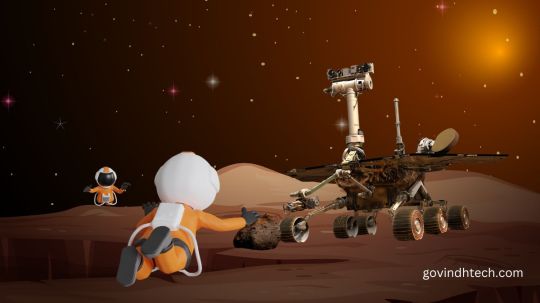
Space Tech
Beyond intrepid exploration, space technology has advanced to address pressing issues on Earth. It is becoming more and more essential to the effective operation of contemporary societies and their economic growth. Space has the potential to directly affect billions of people’s lives and open up large-scale, highly impactful solutions.
A broad term for satellites, space stations, ground stations, tracking and monitoring centers, downstream analytics and artificial intelligence, software, and other technologies, SpaceTech offers innovative ways to solve global concerns. Satellites increase communication, navigation, and earth observation capacity at low cost even in remote locations. Satellite-based earth observation data is vital, accurate, and reliable for data-driven decision-making by businesses and governments.
The underserved and otherwise unprofitable regions can benefit from high-speed connectivity thanks to the satellites. The application of action plans for intelligent agriculture, resource management (land and water), infrastructure development (urban and rural), climate and weather monitoring, environmental protection (including reducing the risk of disaster), and other purposes can all benefit from the use of satellite data.
Aerospace Innovation
The space industry is predicted to increase in value from USD 360 billion in 2018 to USD 558 billion by 2026 and roughly USD 1 trillion by 2040. Even though the Indian Space Research Organization (ISRO) is one of the world’s top space agencies and is working on projects like the Indian Regional Navigation Satellite System (NavIC) and the Mars Orbiter Mission (MOM), India currently only makes up 2%, or USD 7 Bn, of this market value.
One reason could be that the private sector’s contribution to the Indian space industry has primarily consisted of ISRO subcontracting, with ISRO historically handling the crucial value addition activities internally. Because of this, Indian private companies have lagged behind other world leaders in SpaceTech in terms of end-to-end capabilities.
The publication of SpaceCom Policy 2020, Space RS Policy 2020, Geospatial Policy 2021, and other policies, along with the creation of organizations like NewSpace India Ltd (NSIL) and the Indian National Space Promotion and Authorization Centre (IN–SPACe), have created a national push to expedite the private sector’s involvement in the Indian space area. The Department of Space is also working on a comprehensive Space Act and other policies, including launch vehicle and space exploration policies.
Because of our natural curiosity and desire to understand the universe, space travel has long fascinated people.
Recently, private enterprise and international cooperation have transformed space exploration.
This article will explore the changing face of space exploration and emphasize the importance of international collaboration and private industry.
New Space Technologies
Pioneers of Personal Space Travel
NASA, Roscosmos, and ESA were the only government space agencies allowed to explore space. However, private companies leading space innovation changed everything:
SpaceX since 2002 has resupplied the ISS, developed reusable rocket technology, and prepared to colonize Mars.
Jeff Bezos’ Blue Origin offers professional and recreational suborbital and orbital spaceflight.
Rick Branson’s suborbital space tourism company, Virgin Galactic.
Innovating, competing, and seeking commercial opportunities beyond Earth are redefining space exploration in private space ventures.
Space Exploration Companies
International Space Cooperation
Space exploration requires international cooperation even as private businesses grow:
The Earth-orbiting International Space Station (ISS) is a global collaboration marvel. European, Japanese, Canadian, Russian, and US space agencies participate.
Mars exploration: NASA, ESA, and others work on Curiosity and Mars Sample Return.
The Artemis Accords outlines global cooperation on the Moon and beyond, inviting international partners to lunar exploration.
Global Collaboration and Private Enterprises Benefits
Space exploration benefits from private sector involvement and international cooperation in a number of ways.
Innovation: By bringing in competition and innovation, private endeavors lower costs and advance technology.
Commercialization: Businesses worldwide can take advantage of commercial endeavors to expand their satellite deployment, space tourism, and resource exploitation capabilities.
Shared Resources: Working together, nations can pool resources, exchange knowledge, and take on challenging projects.
Scientific Discovery: Across national boundaries, international cooperation increases the possibility of scientific discovery and exploration.
Difficulties and Things to Think About
Although private and international partnerships present notable benefits, they also present certain challenges.
Regulation: To address new challenges, the framework governing international cooperation and private space endeavors needs to change.
Resource Management: A complex ethical and legal challenge is the responsible use of space resources, such as lunar mining.
Space Debris: Coordinated actions ought to tackle the expanding problem of space debris and environmentally friendly space operations.
Space Travel Prospects
Future space exploration could lead to asteroid mining, planet colonization, and scientific breakthroughs.
Space exploration is entering a new era as private companies and multinational partnerships change the space environment.
Space exploration is more accessible, sustainable, and transformative than ever thanks to private innovation and international collaboration. It shows our willingness to push the limits and our enduring spirit of exploration.
Mars Rover
What is Mars Rover?
A robotic vehicle that investigates the surface of Mars is called a rover. Rovers are long-range, remotely controlled vehicles that gather data and take images while traveling great distances. They have found evidence of water, ancient life, and possible resources on Mars, among many other significant discoveries.
Six Mars rovers have been successful so far:
In 1997, Sojourner became the first rover to set foot on Mars. During 83 days, it investigated the Ares Vallis region.
The twin rovers Spirit (2004) and Opportunity (2004) touched down on Mars in 2004. For many years, they investigated the Gusev Crater and Meridiani Planum, respectively. Opportunity stopped operating in 2018 and Spirit became stuck in 2010.
Gale Crater is presently being explored by Curiosity (2012). It has found evidence of ancient lakes and rivers, among many other significant discoveries.
The Jezero Crater region is being explored in Perseverance (2021). In addition to gathering samples of rock and regolith broken rock and soil for potential return to Earth, it is searching for indications of prehistoric life.
The first Chinese rover to set foot on Mars is Zhurong (2021). It is investigating the area of Utopia Planitia.
An essential component of our Mars exploration are the Mars rovers. They have made significant contributions to our understanding of the Red Planet’s potential for habitability.
Read more on Govindhtech.com
#Space Tech#MarsExploration#Ventures#SpaceTech#satellites#AI#Aerospace#NASA#technews#technology#govindhtech
2 notes
·
View notes
Text
ब्लैक होल, न्यूट्रान तारों के रहस्य से उठेगा पर्दा, XPoSAT मिशन लॉन्च, नए साल पर इसरो की सफल शुरुआत
श्रीहरिकोटा (आंध्र प्रदेश): साल 2024 के पहले दिन ही ने देश का पहला ऐसा सैटलाइट लॉन्च किया जो स्पेस में ब्लैक होल्स, पल्सर, आकाशगंगा और इनसे निकलने वाले कॉस्मिक रेडिएशन यानी ब्रह्मांडीय विकरण की स्टडी करेगा। इसरो का सबसे भरोसेमंद रॉकेट PSLV अपने 60वें मिशन पर XPoSAT नाम का यह सैटलाइट लेकर गया और उसे 650 किलोमीटर की निचली ऑर्बिट में स्थापित कर दिया। बाद में वैज्ञानिकों ने इसकी ऊंचाई 350 किलोमीटर तक कम कर दी। यही XPoSAT एक्स-रे स्रोत के रहस्यों का पता लगाने और ‘ब्लैक होल’ की रहस्यमय दुनिया की स्टडी में मदद करेगा। इसरो के इस मिशन का जीवनकाल करीब पांच साल है। इससे पहले अमेरिकी स्पेस एजेंसी नासा ही 2021 में ऐसा सैटलाइट स्पेस में छोड़ चुकी है।क्या है XPoSat?XPoSat दरअसल एक तरह की अडवांस्ड एस्ट्रोनॉमी ऑब्जर्वेटरी है। इसमें ब्लैक होल और न्यूट्रॉन स्टार्स की स्टडी के लिए दो पेलोड POLIX (पोलारिमीटर इंस्ट्रूमेंट इन एक्स-रे) और XSPECT (एक्स-रे स्पेक्ट्रोस्कोपी और टाइमिंग) लगे हैं। इसमें POLIX को रमन रिसर्च इंस्टिट्यूट ने यूआर राव सेंटर की मदद से बनाया है। यह दुनिया का पहला इंस्ट्रुमेंट है, जो 8 से 30 keV यानी किलो इलेक्ट्रॉन वोल्ट एनर्जी बैंड पर काम करेगा। यह खगोलीय पिंडों से पैदा होने वाले पोलराइजेशन की डिग्री और कोण को मापेगा। दूसरा पेलोड - XSPECT 0.8-15 keV एनर्जी बैंड में स्पेक्ट्रोस्कोपिक जानकारी प्रदान करेगा यानी यह एक्सरे स्रोतों के अस्थायी, वर्णक्रमीय और ध्रुवीकरण विशेषताओं के अध्ययन को आसान बनाएगा।क्या है इस लॉन्च की अहमियत?XPoSat एक्स-रे के अहम डेटा जुटाएगा और इससे हमें ब्रह्मांड को बेहतर तरीके समझने में मदद मिलेगी। दरअसल सामान्य ऑप्टिकल टेलिस्कोप हमें बताता है कोई खगोलीय चीज कैसी दिखती है, लेकिन यह पता नहीं चल पाता कि ये कैसे बनी है��� और इनका व्यवहार कैसा है। इन नक्षत्रों से आने वाली तरंगों के अन्य रूपों जैसे एक्स-रे, गामा-रे, ब्र्ह्मांड या रेडियो तरंगों से डेटा इकट्ठा करते हैं। एक्स-रे उन जगहों से आती हैं, जहां पदार्थ अपनी चरम स्थिति में होते हैं यानी जबरदस्त टकराव, बड़े विस्फोट, तेज घूर्णन और मजबूत चुंबकीय क्षेत्र वाली जगह होते हैं। इनमें ब्लैक होल्स भी होते हैं, जो खत्म होते तारे के अपने ही वजन के दबाव से बनते हैं। ब्लैकहोल में गुरुत्वाकर्षण इतना अधिक होता है कि इसमें से प्रकाश भी नहीं निकल पाता। इसलिए हम इन्हें देख नहीं पाते है उनकी स्टडी के लिए खास चीजों की जरूरत होती है। यह एक्सरे टेलिस्कोप ब्लैकहोल्स के साथ ऐसे ही क्वासर, सुपरनोवा और न्यूट्रॉन तारों की स्टडी में मदद करेगा।भारतीय स्पेस स्टेशन के लिए क्यों जगी उम्मीद?इस मिशन के साथ फ्यूल सेल पावर सिस्टम (FCPS) भी भेजा गया है। इस विक्रम साराभाई अंतरिक्ष केंद्र ने बनाया है। इसमें केमिकल रिएक्शन के जरिए बिजली पैदा की जाती है, जिससे पावर लंब समय तक सप्लाई की जा सकती है। यह फ्यूल सेल स्पेस मिशन के लिए ऊर्जा का टिकाऊ स्रोत बन सकता है। यह लंबी अवधि के स्पेस मिशन के लिए गेम चेंजर साबित हो सकता है। भारत के स्पेश स्टेशन के लिए यह अहम साबित हो सकती है। इसरो का लक्ष्य है कि 2035 तक भारत का अपना स्पेस मिशन हो। इसके साथ स्पेस टेक स्टार्टअप ध्रुव स्पेस, बेलाट्रिक्स एयरोस्पेस, TM2स्पेस के पेलोड भी PSLV रॉकेट के साथ भेजे गए हैं। कुल 10 पेलोड इस रॉकेट के साथ भेजे गए हैं।इस साल कितने और मिशन होंगे?ISRO के चेयरमैन एस. सोमनाथ ने बताया कि साल 2024 गगनयान मिशन की तैयारियों का साल होगा। इसके अलावा इस साल 12-14 मिशन लॉन्च करने का लक्ष्य है। सोमनाथ ने बताया कि आदित्य एल1 6 जनवरी को एल1 पॉइंट पर पहुंच जाएगा और उसके बाद हम अंतिम मनूवर करेंगे।पीएम ने कहा, नए साल की शानदार शुरुआतप्रधानमंत्री नरेंद्र मोदी ने कहा कि हमारे वैज्ञानिकों की बदौलत 2024 की शानदार शुरुआत हुई। यह लॉन्च हमारे स्पेस सेक्टर के लिए जबरदस्त न्यूज है और यह इस क्षेत्र में भारत की क्षमता को बढ़ाएगा। देश को अभूतपूर्व ऊंचाई तक ले जाने के लिए ISRO के हमारे वैज्ञानिकों और संपूर्ण अंतरिक्ष जगत को बहुत शुभकामनाएं। http://dlvr.it/T0rSTc
0 notes
Text
From National Film Awards to Global Triumphs: India's Multifaceted Excellence

The National Film Awards, an annual celebration of cinematic brilliance organized by the Directorate of Film Festivals under the Ministry of Information and Broadcasting, Government of India, stand as the pinnacle of recognition for excellence in Indian cinema. The recently concluded 69th National Film Awards, held on October 17, 2023, at Vigyan Bhawan in Delhi, not only showcased the storytelling prowess of Indian cinema but also underscored its increasing impact on the global stage.
In a historic milestone, the Telugu epic action film "RRR" etched its name in the annals of cinema history by winning the Oscar for Best Original Song, specifically for the soul-stirring "Naatu Naatu," at the 95th Academy Awards in 2023. This groundbreaking achievement marks the first time an Indian film has clinched an Oscar in a competitive category, a resounding testament to the global resonance of Indian cinematic artistry and the dedication of the industry's talented professionals.
Beyond the realm of cinema, Indians are carving a niche for themselves in various fields, exhibiting excellence and leadership worldwide:
Politics:
Rishi Sunak: As the Chancellor of the Exchequer of the United Kingdom, Sunak holds the distinction of being the first person of Indian origin in this influential position.
Kamala Harris: Serving as the Vice President of the United States, Harris is the first person of Indian origin to hold this esteemed office.
Pramila Jayapal: Breaking barriers, Jayapal is the first Indian-American woman elected to the United States Congress.
Business:
Sundar Pichai: At the helm of Alphabet and Google, Pichai's leadership places him among the most influential figures globally.
Satya Nadella: As the CEO of Microsoft, Nadella contributes significantly to shaping the global tech industry.
Arvind Krishna: Leading IBM as its CEO, Krishna stands as a prominent Indian-origin business leader in the technology sector.
Sports:
Sachin Tendulkar: A cricketing legend, Tendulkar's influence transcends borders, making him a global icon.
PV Sindhu: With two Olympic medals in badminton, Sindhu ranks among India's most accomplished athletes.
Virat Kohli: As the captain of the Indian cricket team, Kohli is not only a cricketing sensation but a global sports icon.
Making a Global Impact:
Malala Yousafzai: A Nobel Peace Prize laureate and education activist, Yousafzai's global advocacy centers on the right to education for all girls.
Satish Dhawan: The transformative leader of the Indian Space Research Organisation (ISRO), Dhawan played a pivotal role in elevating ISRO to international acclaim.
Amartya Sen: A Nobel Prize-winning economist and philosopher, Sen's intellectual contributions make him a revered figure on the global stage.
IAS Officers with Global Recognition:
Hari Chandana Dasari: Acknowledged with the British Council Alumni Award-2021 under the Social Impact category for her impactful work in education.
Durga Shakti Nagpal: Notably suspended for taking a stand against illegal sand mining, Nagpal remains a symbol of integrity in the administrative sphere.
Armstrong Pame: Honored with the Ramon Magsaysay Award for his exemplary work in rural development, Pame exemplifies the transformative power of dedicated civil service.
These luminaries represent a fraction of the vast talent pool that India contributes to the global arena. Their accomplishments serve not only as a source of national pride but also as an inspiration for individuals worldwide, showcasing the transformative potential of talent, hard work, and dedication. From the silver screen to political offices, corporate corridors, sports arenas, and administrative realms, Indians are leaving an indelible mark on the world stage.
Indeed #Resurgent India 🇮🇳 is on its highway to reclaim its rightful place on the world stage. The time is here and now. #TheyInspireUs #Indians
#NRI s #India #Amritkaal #ISRO #NarendraModi #AmritMahotsav #SheInspiresUs
#HariChandana
0 notes
Text
While the ISRO Free Online Courses on GIS Technology will be conducted from 21 June to 2 July 2021, the course on Earth Observation for Carbon Cycle Studies will be conducted from 21 June to 25 June 2021.
While the ISRO Free Online Courses on GIS Technology will be conducted from 21 June to 2 July 2021, the course on Earth Observation for Carbon Cycle Studies will be conducted from 21 June to 25 June 2021.
#free Offers Online Courses#ISRO Free Online Courses#ISRO Offers Free Online Courses#ISRO Online Courses#Offers Online Courses
0 notes
Text
Space Tourism Market is set to zoom past $12,690.6 Million by 2031 end at a moderate CAGR of 36.4%
, “Space Tourism Market by Type and End Use: Global Opportunity Analysis and Industry Forecast, 2022–2031,” the space tourism market size was $598.4 million in 2021 and is expected to reach $12,690.6 million by 2031, registering a CAGR of 36.4% from 2022 to 2031.
The market for space tourism is mostly driven by the rising trend of space tourism across the globe. The market for space tourism is expected to grow faster than expected throughout the projected period as the practice becomes more widely accepted in international markets. In addition, it is anticipated that increasing competition in the space tourism sector will drive down prices. Furthermore, as the orbit is reached by the next-generation space planes, the cost of entering space is anticipated to fall sharply. As a result, the price of launching satellites is probably going to drop significantly, which would lower the overall cost of space exploration operations. As a result, space flight will eventually become a viable economic option.
Request For Sample :- https://www.alliedmarketresearch.com/request-sample/11039
The space tourism market shows high growth potential in Asia-Pacific and LAMEA. Significant contributors to the growth of the Asia-Pacific market include the China National Space Administration (CNSA), the Indian Space Research Organization (ISRO), and Japan Aerospace Exploration Agency (JAXA). CAS Space, a Chinese Academy of Sciences (CAS) spinoff, has been developing rockets for commercial satellite launches.
On the other side, the environment is harmed by space travel. Launches of rockets harm the environment in general. Ozone depletion is caused by the discharge of hazardous gases and black carbon (soot particles) into the upper atmosphere by rocket engines using rocket fuels. Some space firms, though, don't use black carbon as fuel. Rockets powered by liquid hydrogen-hydrogen fuel are used by businesses like Blue Origin's New Shepard. Burning hydrogen produces water vapor instead of carbon dioxide. Such factors are restraining the space tourism market growth.
The space tourism market forecast is segmented on the basis of type, end use, and region. On the basis of type, the market is divided into orbital and sub orbital. The sub orbital segment accounted for a major space tourism market share in 2021, and is expected to grow at a significant CAGR during the forecast period. Suborbital tourism is on the rise as it allows individuals to experience weightlessness and observe space without actually exiting the Earth's orbit. As a result, human spaceflight can reach the edge of the universe without entering orbit.
As per end use, the space tourism market analysis is segmented into Government and commercial. The commercial segment accounted for a major share of the market in 2021, and is expected to grow at a significant CAGR during the forecast period. The commercial space tourism market is rising and expected to dominate the market. There were thirteen commercial spaceflight missions undertaken by several private and government organizations, of which seven missions were executed successfully. Billionaires have invested considerable sums in traveling to space and witnessing the Earth from above.
In 2021, North America accounted for 43.7% share in the global space tourism market and is expected to maintain its dominance during the forecast period. However, LAMEA and Asia-Pacific are expected to possess the highest CAGRs, owing to the rising space tourism market trends and Focus on Research and Development (R&D) initiatives by market players.
Request For Customization :- https://www.alliedmarketresearch.com/request-for-customization/11039
The COVID-19 epidemic has had a significant impact on the commercial aviation sector and has prevented many people from travelling for both leisure and business. The growth of the space tourism market has been hampered by the setback in the travel and tourism sector. It is believed that this effect may lengthen space missions and momentarily halt long-haul missions. There are now more options for supersonic and hypersonic flights because to the expansion of corporate jet travel and in-flight connectivity. When compared to other mediums, it has enabled the companies to realize the potential for time savings on long-haul flights.
The major players analyzed for the global space tourism industry is Blue Origin, Virgin Galactic, SpaceX, Airbus Group SE, Boeing, ZERO-G, Axiom Space, Bigelow Aerospace, Orion Span, Space Adventures, Space Perspective, World View Enterprises, Zero2Infinity.
KEY FINDINGS OF THE STUDY
By type, the sub-orbital segment was the highest revenue contributor to the market with $355.3 million in 2021 and is estimated to reach $7,227.7 million by 2031, with a CAGR of 35.8%.
Depending on end-use, the commercial segment was the highest revenue contributor to the market, with $348.2 million in 2021, and is estimated to reach $7,046.4 million by 2031, with a CAGR of 37.7%.
Region-wise, North America was the highest revenue contributor, accounting for $267.2 million in 2021, and is estimated to reach $4,936.7 million by 2031, with a CAGR of 34.6%.
Buy Now :-
:- https://www.alliedmarketresearch.com/checkout-final/82fcd0aa3e33a7fe66937f2bcdd9bdeb
0 notes
Text
What is The Goal of Chandrayaan 3? How Can it Get The Best Image Resolution of the Moon?
As of my last knowledge update in September 2021, there has been no official announcement or information about Chandrayaan 3. Up to that point, Chandrayaan 2 was the latest lunar exploration mission by the Indian Space Research Organisation (ISRO). If there have been developments or announcements regarding Chandrayaan 3 after September 2021, I wouldn't have information about them.
However, I can provide you with information about Chandrayaan 2 and its goals, as well as some general principles about achieving high-resolution images of the Moon.
Chandrayaan 2 was launched to explore the southern pole of the Moon, study its mineral composition and topography, and search for water ice in the polar regions. It consisted of an orbiter, a lander named Vikram, and a rover named Pragyan. The orbiter was equipped with advanced scientific instruments to study the Moon's surface and atmosphere from orbit.
To achieve high-resolution images of the Moon, spacecraft like Chandrayaan 2 use specialized cameras and imaging systems. These systems typically rely on advanced optics, sensors, and onboard processing capabilities. The key factors that contribute to obtaining high-resolution images are:
Camera Quality: The quality of the camera's optics, sensors, and other components significantly influences the clarity and detail captured in the images. Advancements in camera technology play a crucial role in achieving high-resolution images.
Altitude and Orbit: The altitude and orbit of the spacecraft matter. Lower orbits provide higher resolution images due to their proximity to the lunar surface. However, a balance needs to be struck to avoid crashing into the Moon.
Lighting Conditions: The angle of sunlight can greatly affect the visibility of surface features. Images taken when the Sun is at a lower angle can reveal more topographical details due to the longer shadows cast by surface structures.
Image Processing: Onboard processing of images can enhance the details and remove noise, improving the overall quality of the images sent back to Earth.
Telemetry and Data Transmission: High-resolution images contain a significant amount of data. Efficient data compression and transmission methods are crucial to ensure that the images can be successfully sent back to Earth.
Stability and Calibration: The spacecraft must be stable and well-calibrated to prevent blurring or distortion during image capture.
Regarding your request for "controversial things," it's important to note that discussing controversial or sensitive topics without proper context and accuracy can lead to misunderstandings or misinformation. If you have any specific topic or angle you'd like to explorr!
upscale photo online, increase picture resolution, upscalepics,
0 notes
Text
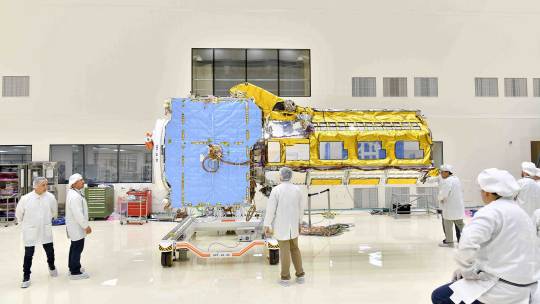

Powerful NASA-ISRO Earth Observing Satellite Coming Together in India
Built on opposite sides of the planet, the NISAR satellite will deepen understanding of climate change, deforestation, glacier melt, volcanoes, earthquakes, and more.
Two major components of the NISAR satellite have been combined to create a single spacecraft in Bengaluru, India. Set to launch in early 2024, NISAR – short for NASA-ISRO Synthetic Aperture Radar – is being jointly developed by NASA and the Indian Space Research Organisation, or ISRO, to track movements of Earth’s land and ice surfaces in extremely fine detail. As NISAR monitors nearly every part of our planet at least once every 12 days, the satellite will also help scientists understand, among other observables, the dynamics of forests, wetlands, and agricultural lands.
About the size of an SUV and partially wrapped in gold-colored thermal blanketing, the satellite’s cylindrical radar instrument payload contains two radar systems. The S-band radar is particularly useful for monitoring crop structure and the roughness of land and ice surfaces, while the L-band instrument can penetrate denser forest canopies to study the woody trunks of trees, among other observables. The wavelengths of the S-band and L-band signals are about 4 inches (10 centimeters) and 10 inches (25 centimeters), respectively, and both sensors can see through clouds and collect data day and night.
The payload took a roundabout journey to get to this point. The S-band radar was built at the Space Applications Centre in Ahmedabad in western India, then flown in March 2021 to NASA’s Jet Propulsion Laboratory in Southern California, where engineers had been developing NISAR’s L-band radar. At JPL, the two systems were fixed to the payload’s barrel-like frame before being flown to the U R Rao Satellite Centre (URSC) in the southern Indian city of Bengaluru in March 2023.
In the meantime, engineers and technicians at URSC, collaborating with teams from JPL, were busy developing the spacecraft’s main body, or bus, which is covered in blue blanketing that protects it during assembly and testing prior to launch. The bus, which includes components and systems developed by both ISRO and JPL, will provide power, navigation, pointing control, and communications for the mission.
Since the radar payload and bus were joined in a URSC clean room in mid-June, NASA and ISRO teams have been working together to route thousands of feet of cabling between them. Still to be attached: the satellite’s solar panels, as well as the drum-shaped, wire-mesh reflector that will unfold from the end of a 30-foot (9-meter) boom. At nearly 40 feet (12 meters) in diameter, the reflector will be largest radar antenna of its kind ever launched into space.
The NISAR satellite is currently undergoing performance testing, to be followed by several rounds of environmental testing to ensure it can withstand the rigors of launch and meet all of its operational requirements once in orbit. Then it will be transported about 220 miles (350 kilometers) eastward to Satish Dhawan Space Centre, where it will be inserted into its launch fairing, mounted atop ISRO’s Geosynchronous Satellite Launch Vehicle Mark II rocket, and sent into low Earth orbit.
More About the Mission
NISAR is an equal collaboration between NASA and ISRO and marks the first time the two agencies have cooperated on hardware development for an Earth-observing mission. JPL, which is managed for NASA by Caltech in Pasadena, leads the U.S. component of the project and is providing the mission’s L-band SAR. NASA is also providing the radar reflector antenna, the deployable boom, a high-rate communication subsystem for science data, GPS receivers, a solid-state recorder, and payload data subsystem. URSC, which is leading the ISRO component of the mission, is providing the spacecraft bus, the S-band SAR electronics, the launch vehicle, and associated launch services and satellite mission operations.
TOP IMAGE....Engineers joined the two main components of NISAR – the spacecraft bus and the radar instrument payload – in an ISRO clean room in Bengaluru, India, in June. The payload arrived from NASA’s Jet Propulsion Laboratory in Southern California in March, while the bus was built at the ISRO facility. Credit: Credit: VDOS-URSC
LOWER IMAGE....A crane is used to align NISAR’s radar instrument payload, seen partially wrapped in gold-colored thermal blanketing, with the satellite’s spacecraft bus, which is inside blue blanketing, in an ISRO clean room in Bengaluru, India, in June. Credit: Credit: VDOS-URSC
0 notes
Text
History of Chandrayaan-3
Chandrayaan-3 is an upcoming lunar mission by the Indian Space Research Organisation (ISRO). It is the third mission in the Chandrayaan series, following Chandrayaan-1 and Chandrayaan-2.
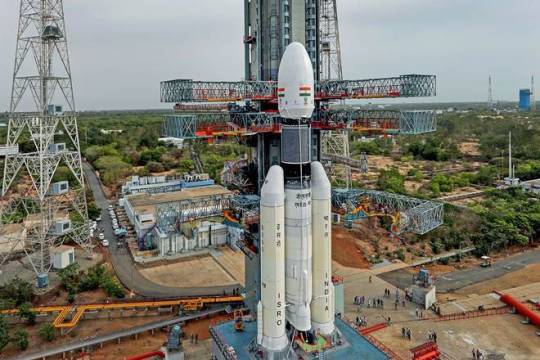
The Chandrayaan-3 mission aims to further explore the Moon and build upon the successes of its predecessors. The primary objective of Chandrayaan-3 is to land a rover on the lunar surface and conduct scientific experiments to gather data and enhance our understanding of the Moon's geology, topography, and mineralogy.
The initial plans for Chandrayaan-3 were announced in 2019, shortly after the Chandrayaan-2 mission faced challenges during its soft landing attempt. The lander and rover components of Chandrayaan-2 were not able to land successfully, but the orbiter module continues to orbit the Moon and collect valuable data.
Chandrayaan-3 is expected to carry similar instruments and payloads as Chandrayaan-2, with improvements and modifications based on the lessons learned from the previous mission. The mission will involve the launch of a Geosynchronous Satellite Launch Vehicle (GSLV) from the Satish Dhawan Space Centre in Sriharikota, India.
The specific timeline and launch date for Chandrayaan-3 have not been officially announced as of my knowledge cutoff in September 2021. However, it is anticipated that the mission will take place in the near future, continuing India's pursuit of lunar exploration and scientific discovery.
How it is launched?
Chandrayaan-3 is expected to be launched using the Geosynchronous Satellite Launch Vehicle (GSLV) Mk III, also known as the "Bahubali" rocket. The GSLV Mk III is a three-stage launch vehicle developed by the Indian Space Research Organisation (ISRO) specifically for launching heavier payloads, including lunar missions.
The GSLV Mk III has a height of approximately 43 meters and a lift-off mass of around 640 tonnes. It consists of two solid strap-on boosters (S200), a core liquid booster (L110), and an upper stage cryogenic engine (C25). The first stage is powered by two solid rocket motors, while the second stage uses a liquid propellant engine. The cryogenic upper stage is powered by a cryogenic engine that uses liquid hydrogen and liquid oxygen as propellants.
During the launch of Chandrayaan-3, the GSLV Mk III will be used to place the spacecraft into Earth orbit. From there, the spacecraft will perform a series of orbit-raising maneuvers and trajectory corrections to set a course for the Moon. Once the spacecraft reaches the vicinity of the Moon, it will perform a lunar capture maneuver to enter into a lunar orbit.
After entering lunar orbit, the spacecraft will gradually reduce its altitude and perform a powered descent to the lunar surface. The lander and rover components will separate from the orbiter module and descend towards the predetermined landing site on the Moon. The landing sequence will involve precise control and guidance systems to ensure a soft landing and safe touchdown of the lander and rover.
It's important to note that the exact launch details and procedures may be subject to change as per ISRO's mission planning and updates.
1 note
·
View note
Text
Space Situational Awareness Market nalysis, Company Profiles, Competitive Landscape and Key Regions Analysis Available by 2029
The global space situational awareness (SSA) market size is projected to grow from USD 1.27 billion in 2021 to USD 1.73 billion in 2028. Radio frequency data is nowadays being used extensively to monitor objects in space. It can also be used to detect and geo locate interference, be it an accidental misalignment of objects or a jammer. It can efficiently detect anomalies and its impact in the performance of the payload system. As per a report by Fortune Business Insights™, titled, “Space Situational Awareness Market, 2021-2028,” the market stood at USD 1.21 billion in 2020. It is set to exhibit a CAGR of 5.27% in the forecast period between 2023-2028.
Information Source-
L3Harris Technologies Wins Infrastructure Modernization Contract worth $89 Million
In February 2021, L3Harris Technologies, a technology company based in the U.S. received a U.S. Space Force and U.S. Space Command contract worth USD 89 million for the modernization and maintenance of the infrastructure to track objects in space. It also includes the Maintenance of Space Situational Awareness Integrated Capabilities (MOSSAIC) program. This program will be able to enhance the systems of Space Force and Space Command for getting a complete picture of the behavior and location of objects in space.
Report Coverage-
The research report is a blend of quantitative, qualitative, andfirst-hand information by analysts operating in this industry. It also contains inputs from experts across the value chain. It offers accurate analysis of governing factors, market attractiveness, trends, and macro-economic indicators as per segments. Lastly, it maps the qualitative impact of multiple factors on various regions.
Drivers & Restraints-
Increasing Usage of Space by Countries for National Security to Boost Growth
The rising participation of multiple countries in the use of space for science, national security, and safety would drive the space situational awareness market growth in the upcoming years. At present, around 80 countries are active in the space industry. The surging congestion in spaceis compelling companies to partner up with other firms for ensuring safety and sustainability of space-related activities. In December 2020, for instance, the Indian Space Research Organization (ISRO) set up a Space Situational Awareness Centre in Bangaloreto work on the Network for Space Object Tracking and Analysis(NETRA) project. However, there are numerous limitations from international and national government agencies revolving around the space industry, which, in turn, may hamper growth.
Segmentation-
Space Weather ServicesSub-segment to Dominate Fueled by Surging Satellite Launches
By objects, thismarket is segregated into mission-related debris, rocket bodies, fragmentation debris, non-functional spacecraft, and functional spacecraft.Based on end-users, it is categorized into commercial and military & government. Lastly, by offering, it is fragmented into software and services. The software segment is further split into space weather services, near-earth object detection services, and space surveillance and tracking services. Out of these, the space weather services sub-segment is expected to dominate throughout the forthcoming years because of the rising number of satellite launches. It held 30.05% in 2020 in terms of the space situational awareness market share.
Regional Insights-
Higher Investments by U.S. DoD to Help North America Dominate: Fortune Business Insights™
Regionally, North America is likely to lead the market in the near future backed by the surging investments in space situational awareness by the U.S. Department of Defense (DoD). The region procured USD 0.43 billion in terms of revenue in 2020. Also, the presence of reputed companies, such as NASA in the region would aid growth. In Asia Pacific, the expansion of the Asia-Pacific Optical Satellite Observation System (APOSOS) in China is anticipated to propel growth. In the rest of the world, increasing collaborations between non-U.S. countries would augment growth.
Competitive Landscape-
New Product Launches and Contracts — Vital Strategies of Key Players
Thismarket houses a large number of organizations that are focusing on participating in various strategies, such as new product launches, signing agreements, and collaborations. A few others
are aiming to strengthen their businesses by gaining new contracts from government authorities. Below are the two industry developments:
October 2020:Ansysacquired Analytical Graphics Inc., a provider of space data services for USD 600 million. It will help the former to broaden its government andcommercial spacebusiness. February 2020:L3Harrisreceived a contract worth USD 1.2 billion from the U.S. Space Force’s Space and Missile Systems Center. It will enable the company to modernize and maintain the network of space surveillance sensors.
Fortune Business Insights™ presents a list of space situational awareness service providers operating in the global market. They are as follows:
Lockheed Martin Corporation (The U.S.) L3Harris Technologies Inc. (The U.S.) Vision Engineering Solutions, LLC (The U.S.) Analytical Graphics, Inc. (The U.S.) Kratos Defense & Security Solutions, Inc. (The U.S.) ExoAnalytic Solutions (The U.S.) SpaceNav (The U.S.) NorthStar Earth & Space Inc. (Canada) GlobVision Inc. (Canada) Etamax Space GmbH (Germany)
0 notes
Text
Pawan Chandana – CEO & Co-founder, Skyroot Aerospace
Skyroot Aerospace, owned by Pawan Chandana, is the first privately held firm in India to construct space rockets. Its goal is to democratise access to space by developing cost-effective and dependable launch vehicles.
0 notes
Text
Centrifugal Blower Market Expansion Projected to Gain an Uptick During 2022-2028
The centrifugal blower market is estimated to grow significantly by 2028 primarily owing to rising product demand in cement production, petrochemicals, metal fabrication, and cryogenics.
Recently, burgeoning need for energy across virtually all industries globally has created an upsurge in the need for power producing units, such as nuclear power plants, coal power plants, thermal power plants, and hydro-power plants. These plants rely heavily on centrifugal fans and blowers to supply air for combustion and other types of heat transfers, which has been favorable for industry expansion.
Get sample copy of this research report @ https://www.gminsights.com/request-sample/detail/2602
Furthermore, centrifugal blowers have gained massive popularity in a number of industries, such as food and drinks, construction, and mining, particularly due to their efficiency and durability. In addition, escalating product requirement in regions with a high volume of air or gas has bolstered market uptake. Notably, industry players have increasingly been investing in product development and innovation in order to gain a competitive edge in the centrifugal blower market, thereby enhancing overall business dynamics.
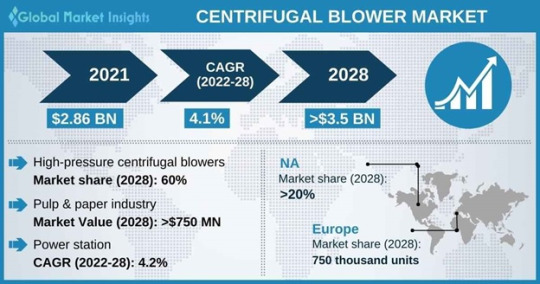
For instance, in June 2021, Indian Space Research Organization (ISRO), the national space agency of India, introduced the Ventilation Assist Unit (VaU), an ICU grade positive pressure mechanical ventilator that has been designed to assist or replace spontaneous breathing in patients suffering from respiratory distress. The VaU has been designed based on a centrifugal blower that pulls in filtered ambient air, compresses it, and delivers it to the patient to provide ventilation, which allows it to function without a compressed pneumatic source.
The centrifugal blower market has been segmented on the basis of pressure, end-user, and region. In terms of end-user, the centrifugal market has been divided into cement plant, pulp & paper, chemical, steel plant, power station, mining, others. The cement plant end-user segment is foreseen to observe significant growth to garner a revenue share of more than 10% by 2028. The proliferating construction industry and mounting demand for cement and minerals are estimated to spur the growth of the segment.
The steel plant end-user segment is anticipated to witness substantial growth by 2028, registering approximately 3.6% CAGR by the forecast timeframe. Centrifugal blowers are used in steel plants to tackle problems like high temperatures and to cater to the need for a high output situation, which is likely to fuel segmental development in the upcoming years.
Request for customization @ https://www.gminsights.com/roc/2602
From the regional point of view, the Latin America centrifugal blower market is estimated to grow at a CAGR of over 3.7% through the forecast period. Meanwhile, the Middle East & Africa centrifugal blower industry held a volume share of around 7% in the overall market in 2021 and is projected to amass notable gains over 2022-2028.
Table of Contents (ToC) of the report:
Chapter 2 Executive Summary
2.1 Centrifugal blower industry 360° synopsis, 2018 – 2028
2.1.1 Business trends
2.1.2 Pressure by end-user trends
2.1.3 End-user trends
2.1.4 Regional trends
Chapter 3 Centrifugal Blowers Industry Insights
3.1 Industry segmentation
3.2 Industry size and forecast, 2018 – 2028
3.3 Industry ecosystem analysis
3.4 Innovation & sustainability
3.5 Industry impact forces
3.5.1 Growth drivers
3.5.1.1 Rapidly growing construction industry in the Asia Pacific
3.5.1.2 Strong product demand from power and mining industry in the U.S.
3.5.1.3 Growing food industry in the Asia Pacific
3.5.2 Industry pitfalls & challenges
3.5.2.1 High production and maintenance cost
3.6 Regulatory landscape
3.7 Growth potential analysis
3.8 Competitive landscape, 2020
3.9 Porter’s analysis
3.10 Regional price trends
3.11 PESTEL Analysis
Browse complete Table of Contents (ToC) of this research report @ https://www.gminsights.com/toc/detail/centrifugal-blower-market
HVAC & Construction Research Reports
Asphalt Mixing Plants Market
Painting Tools Market
Building Thermal Centrifugal Blower Market
About Global Market Insights:
Global Market Insights, Inc., headquartered in Delaware, U.S., is a global market research and consulting service provider; offering syndicated and custom research reports along with growth consulting services. Our business intelligence and industry research reports offer clients with penetrative insights and actionable market data specially designed and presented to aid strategic decision making. These exhaustive reports are designed via a proprietary research methodology and are available for key industries such as chemicals, advanced materials, technology, renewable energy and biotechnology.
Contact Us:
Aashit Tiwari
Corporate Sales, USA
Global Market Insights Inc.
Toll Free: 1-888-689-0688
USA: +1-302-846-7766
Europe: +44-742-759-8484
APAC: +65-3129-7718
Email: [email protected]
#Centrifugal Blower Market Analysis#Centrifugal Blower Market by Type#Centrifugal Blower Market Share#Centrifugal Blower Market Development#Centrifugal Blower Market Growth
0 notes
Text
In 2022, more objects were put in space per launch than in 2021 - Times of India
BENGALURU: In an indication of easy accessibility to space and increasing diverse applications of space technology, more space objects were placed in orbit per launch in 2022 compared to the previous year, Isro’s space situational awareness (SSA) assessment report has revealed. “A total of 2,533 objects were placed in orbit from 179 launches in 2022 as against 1,860 objects from 135 launches in…

View On WordPress
0 notes
Text
Since the 1960s, humans have sent dozens of spacecraft to study Mars. Early missions were flybys, with spacecraft furiously snapping photos as they zoomed past. Later, probes pulled into orbit around Mars; more recently, landers and rovers have touched down on the surface.
But sending a spacecraft to Mars is hard, and landing on the planet is even harder. The thin Martian atmosphere makes descent tricky, and more than 60 percent of landing attempts have failed. So far, four space agencies—NASA, Russia’s Roscosmos, the European Space Agency (ESA), and the Indian Space Research Organization (ISRO)—have put spacecraft in Martian orbit. With eight successful landings, the United States is the only country that has operated a craft on the planet’s surface. The United Arab Emirates and China might join that club if their recently launched Hope and Tianwen-1 missions reach the red planet safely in February 2021.
Early highlights of Mars missions include NASA's Mariner 4 spacecraft, which swung by Mars in July 1965 and captured the first close-up images of this foreign world. In 1971, the Soviet space program sent the first spacecraft into Martian orbit. Called Mars 3, it returned roughly eight months of observations about the planet's topography, atmosphere, weather, and geology. The mission also sent a lander to the surface, but it returned data for only about 20 seconds before going quiet.
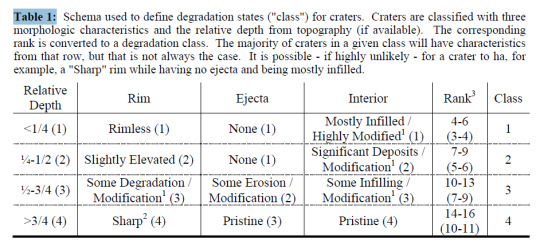




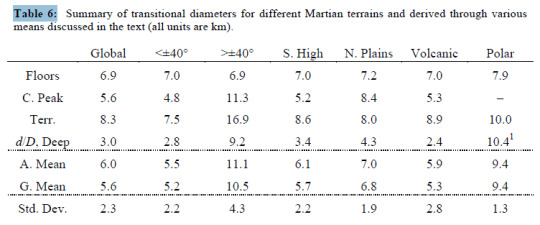
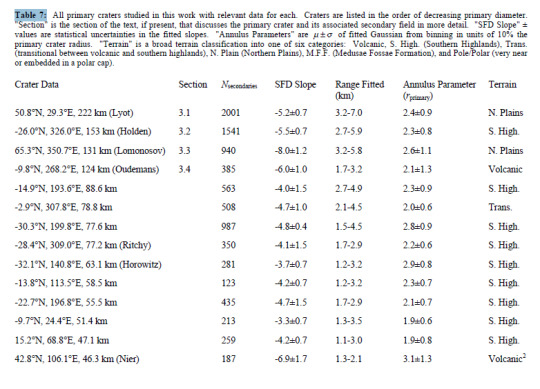


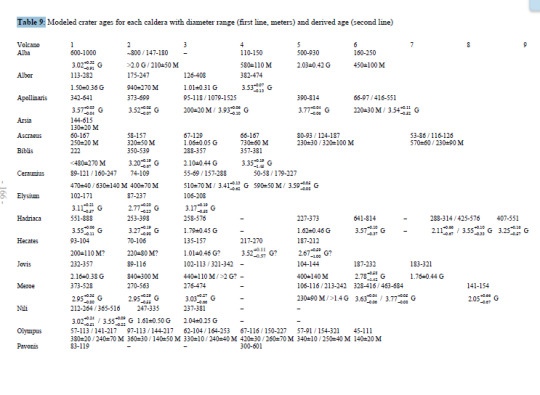
0 notes
Photo

⭐️ INSPIRATIONAL JOURNEY :- 🌼 May be inspiration for some one who has lost all his hope..🥺 Started 2017. Gate got 69.71 marks. Qualified BARC exam not recommended finally. Cleared air india exam. 2018 cleared BARC, BIS, FACT, SUB ENGINEER, ADA. waiting in most . Ek bhi waiting thi jo clear nahi hui 2019 cleared isro missed final by 1.5 marks in interview., Cleared odisha mining corporation got AIR 2 but was not in merit as only one seat in UR. 2021 cleared UPPSC lecturer but not selected in final list.😖 2022 cleared HPSC lecturer finally selected as group B gazetted 🥳🥳⭐️🫶. In between was selected for mtech in IIT Bombay ms , IIT DELHI , IIT ROORKEE, IIT INDORE, IIT JODHPUR, BITS PILANI though my gate score was 724 I cracked because of my interview. 😌 " Lage raho Ek din manzil zarur hasil hogi.✌️ " Cleared almost 14 gov exam ~ Piyush chand ( Telegram as shaktiman ) Insta Id:- https://instagram.com/chand_piyush_?igshid=ZDdkNTZiNTM= [[ Join t.me/BabuAllrounder ]] Insta post:- https://www.instagram.com/p/CoK4ob8oR6o/?igshid=NGJjMDIxMWI=
0 notes
Text
Bangalore Airport Transfers and Online Booking of Taxi

Kempegowda International Airport is an international airport in Bangalore, the capital of Karnataka, India. It is the 3rd busiest airport in India after Delhi and Mumbai airports in terms of passenger numbers, aircraft movements, and domestic and total cargo throughput. It is the 29th busiest airport in gthe entire Asia. In the fiscal year 2021-22, the airport handled approximately 16.2 million passengers and 411,550 short tons (453,660 long tons) of cargo.
Bangalore is a beautiful tourist destination with a long and turbulent history. From historic buildings, ancient temples, and shrines to churches, it has a lot to offer. The best way to efficiently manage your itinerary is to hire a taxi directly from Bangalore International Airport and visit the places of your choice.
Bangalore is also known as 'India's Silicon Valley due to its role as a catalyst for India's IT sector. Bangalore is considered one of the country's leading exporters of information technology (IT). ISRO, Infosys, Wipro, HAL, and other Indian technology organizations are headquartered in the city. Bangalore Airport Taxi is an ideal means of transportation if you are traveling on business and have meetings in various locations in the city.
My Airport Cabs- Best Bangalore Airport Taxi Services
If you‘re looking for a reliable and efficient Bangalore Airport Taxi service, then you should look no further. My Airport Cabs provides the best Bangalore Airport transfer services. It offers the best airport taxi service for a fixed price. Airport taxi service is available 24/7 from anywhere in Bangalore city to Bangalore Airport and vice-versa.
My Airport Cabs is known for transparent dealings, reasonable pricing, well-equipped vehicles, and secured transportation. The most important thing is that the drivers take the shortest routes to reach the client's destination as its staffs are well-versed with the different routes of the city. As passengers enter and leave Kempegowda International Airport, peak-hour traffic and waiting times will not deviate from fixed rates. The taxi service also follows the best and shortest route with no tolls and is 100% hassle-free to save your time and money.
Features of our Online Booking Airport Taxi Services
· Book Bangalore airport taxi services, day packages and outstations by choosing a vehicle from a range of prices and distances
· You can also pre-book a ride at 'My Airport Cabs' at BIAL Bangalore City.
· You will get the confirmation message to the registered mobile number immediately after booking.
· Vehicle and driver details will be provided 2 hours prior to departure.
· After the trip, customers can choose between cash, Google Pay, and Phone pe.
Resource: https://myairportcab.wordpress.com/2022/12/14/bangalore-airport-transfers-and-online-booking-of-taxi/
0 notes
Text
Space Tourism Market is set to zoom past $12,690.6 Million by 2031 end at a moderate CAGR of 36.4%
Global Opportunity Analysis and Industry Forecast, 2022–2031,” the space tourism market size was $598.4 million in 2021 and is expected to reach $12,690.6 million by 2031, registering a CAGR of 36.4% from 2022 to 2031.
The market for space tourism is mostly driven by the rising trend of space tourism across the globe. The market for space tourism is expected to grow faster than expected throughout the projected period as the practice becomes more widely accepted in international markets. In addition, it is anticipated that increasing competition in the space tourism sector will drive down prices. Furthermore, as the orbit is reached by the next-generation space planes, the cost of entering space is anticipated to fall sharply. As a result, the price of launching satellites is probably going to drop significantly, which would lower the overall cost of space exploration operations. As a result, space flight will eventually become a viable economic option.
Request For Sample :- https://www.alliedmarketresearch.com/request-sample/11039
The space tourism market shows high growth potential in Asia-Pacific and LAMEA. Significant contributors to the growth of the Asia-Pacific market include the China National Space Administration (CNSA), the Indian Space Research Organization (ISRO), and Japan Aerospace Exploration Agency (JAXA). CAS Space, a Chinese Academy of Sciences (CAS) spinoff, has been developing rockets for commercial satellite launches.
On the other side, the environment is harmed by space travel. Launches of rockets harm the environment in general. Ozone depletion is caused by the discharge of hazardous gases and black carbon (soot particles) into the upper atmosphere by rocket engines using rocket fuels. Some space firms, though, don't use black carbon as fuel. Rockets powered by liquid hydrogen-hydrogen fuel are used by businesses like Blue Origin's New Shepard. Burning hydrogen produces water vapor instead of carbon dioxide. Such factors are restraining the space tourism market growth.
The space tourism market forecast is segmented on the basis of type, end use, and region. On the basis of type, the market is divided into orbital and sub orbital. The sub orbital segment accounted for a major space tourism market share in 2021, and is expected to grow at a significant CAGR during the forecast period. Suborbital tourism is on the rise as it allows individuals to experience weightlessness and observe space without actually exiting the Earth's orbit. As a result, human spaceflight can reach the edge of the universe without entering orbit.
As per end use, the space tourism market analysis is segmented into Government and commercial. The commercial segment accounted for a major share of the market in 2021, and is expected to grow at a significant CAGR during the forecast period. The commercial space tourism market is rising and expected to dominate the market. There were thirteen commercial spaceflight missions undertaken by several private and government organizations, of which seven missions were executed successfully. Billionaires have invested considerable sums in traveling to space and witnessing the Earth from above.
In 2021, North America accounted for 43.7% share in the global space tourism market and is expected to maintain its dominance during the forecast period. However, LAMEA and Asia-Pacific are expected to possess the highest CAGRs, owing to the rising space tourism market trends and Focus on Research and Development (R&D) initiatives by market players.
Request For Customization :- https://www.alliedmarketresearch.com/request-for-customization/11039
The COVID-19 epidemic has had a significant impact on the commercial aviation sector and has prevented many people from travelling for both leisure and business. The growth of the space tourism market has been hampered by the setback in the travel and tourism sector. It is believed that this effect may lengthen space missions and momentarily halt long-haul missions. There are now more options for supersonic and hypersonic flights because to the expansion of corporate jet travel and in-flight connectivity. When compared to other mediums, it has enabled the companies to realize the potential for time savings on long-haul flights.
The major players analyzed for the global space tourism industry is Blue Origin, Virgin Galactic, SpaceX, Airbus Group SE, Boeing, ZERO-G, Axiom Space, Bigelow Aerospace, Orion Span, Space Adventures, Space Perspective, World View Enterprises, Zero2Infinity.
KEY FINDINGS OF THE STUDY
By type, the sub-orbital segment was the highest revenue contributor to the market with $355.3 million in 2021 and is estimated to reach $7,227.7 million by 2031, with a CAGR of 35.8%.
Depending on end-use, the commercial segment was the highest revenue contributor to the market, with $348.2 million in 2021, and is estimated to reach $7,046.4 million by 2031, with a CAGR of 37.7%.
Region-wise, North America was the highest revenue contributor, accounting for $267.2 million in 2021, and is estimated to reach $4,936.7 million by 2031, with a CAGR of 34.6%.
Buy Now :-
:- https://www.alliedmarketresearch.com/checkout-final/82fcd0aa3e33a7fe66937f2bcdd9bdeb
0 notes